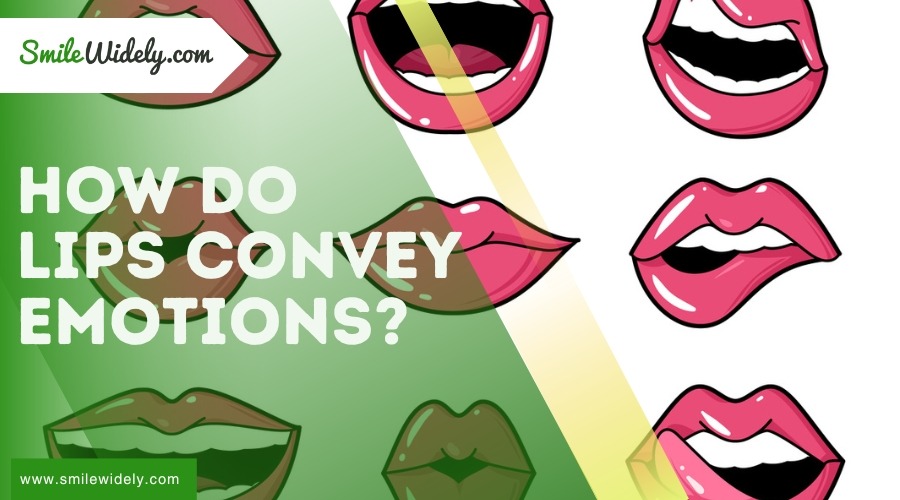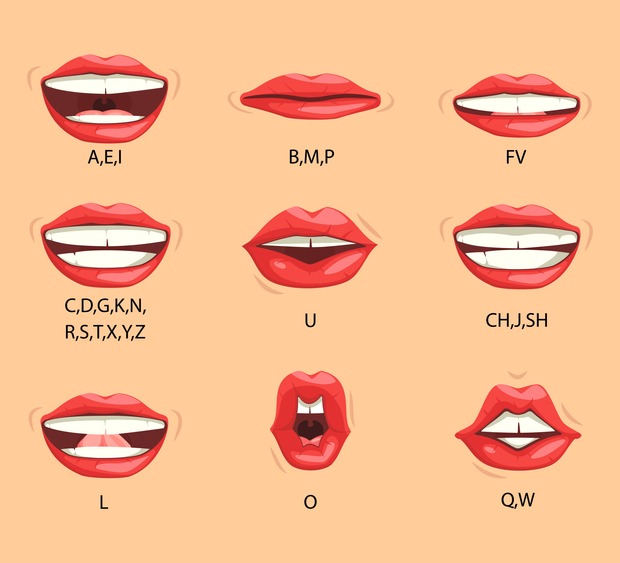Lips are the canvas where emotions paint their true colors, revealing what words often conceal. You’ve likely noticed how a quiver of the lip can betray anxiety, or how a broad smile can light up a room, signaling joy and openness.
But have you ever pondered the subtleties behind these movements? Beyond the obvious, lips offer a rich tapestry of clues that can unravel the complexities of human emotion. By paying closer attention to these details, you stand on the brink of uncovering deeper layers of understanding in the silent conversations that play out before your eyes.
The Science of Smiles
Smiles aren’t just simple expressions; they’re complex signals that reveal a spectrum of emotions, from genuine joy to polite acknowledgment. When you smile, your lips work in tandem with your entire face to communicate feelings that words sometimes can’t capture. The subtlety of facial expressions, especially those involving the lips, can convey an incredible emotional depth that’s often underestimated.
Duchenne smiles, for instance, are your gold standard for sincerity. They involve not just the upward curl of your lips but also the crinkling of your eyes, signaling true happiness. This contrasts with social smiles, which might only engage your lips, often used in more polite or superficial interactions. These differences highlight how your lips, in conjunction with other facial features, can indicate the authenticity of your emotions.
Moreover, the phenomenon of micro expressions takes this complexity a step further. These quick, involuntary facial expressions can reveal your true feelings, even when you try to conceal them. For example, a slight asymmetry in your smile or a micro expression of contempt might indicate insincerity or fake happiness, offering a glimpse into the nuanced world of emotional communication that your lips partake in.
Pursed Lips and Contemplation
When someone’s lips purse tightly together, it often signals they’re wrestling with internal debates or skepticism. This subtle yet powerful facial expression speaks volumes about what’s going on beneath the surface, even when no words are spoken. Pursed lips, a key component of body language, reveal a range of emotions from contemplation to disapproval, making them an essential nonverbal cue in understanding human interactions.
Here’s what you need to know about pursed lips and contemplation:
- Contemplative Response: Lip pursing can indicate a person is in deep thought, grappling with skepticism or internal conflict. It’s a nonverbal cue that they’re contemplating their next move, words, or forming an opinion.
- Holding Back: This action often shows someone is restraining their emotions or thoughts, choosing to keep their opinions, doubts, or negative reactions to themselves.
- Signal of Disagreement: When you see someone’s lips purse during a conversation, it might be a sign they disagree or are unsure about what’s being discussed.
- Insight into Emotions: Observing this facial expression can offer valuable insights into someone’s inner thoughts, reservations, or emotional barriers, enhancing your understanding of their nonverbal communication.
Understanding the nuances behind pursed lips and their link to contemplation enriches our comprehension of facial expressions and body language, providing a deeper insight into the complexities of human emotions.
Emotional Signals of Lip Biting
Lip biting often reveals the silent struggle of anxiety and emotional discomfort lurking beneath a person’s composure. This common stress indicator, more than just a fleeting habit, can convey deep-seated feelings of insecurity, nervousness, or unease. When you notice someone biting their lips, it’s not merely a physical act; it’s a window into their emotional state, signaling inner turmoil, hesitation, or self-restraint. This behavior is a subconscious response to holding back emotions or internal tension, showcasing how facial expressions, particularly lip compression, play a crucial role in communicating psychological stress levels.
Understanding the emotional signals of lip biting can provide valuable insights into an individual’s mental well-being. It might suggest that they’re experiencing a high level of psychological stress, struggling to maintain their composure in the face of anxiety or emotional discomfort. Observing these subtle cues in facial expressions, especially the act of lip biting, allows you to comprehend the complexities of human emotions and the silent language they speak, offering a deeper understanding of the psychological underpinnings of stress and emotional turmoil.
Disappearing Lips Phenomenon
When you notice someone’s lips vanish or compress, it’s not just a quirky facial expression; it’s a signal of deeper emotional turmoil. These disappearing acts can stem from stress, doubt, or even a subconscious attempt to hide true feelings.
Understanding why lips disappear and the emotional toll it signifies can give you insightful clues into someone’s psychological state.
Causes of Disappearance
Understanding the causes behind the disappearing lips phenomenon reveals that it’s often a sign of doubt, stress, or exaggeration, reflecting the body’s subconscious reaction to psychological discomfort. This behavior, a nonverbal cue deeply rooted in the body’s dictionary of body language, acts as a silent alarm for those in tune with such signals.
- Doubt: Your lips may thin or disappear when you’re uncertain, signaling internal questioning.
- Exaggeration: In moments of overstatement, lips retract, hinting at the struggle to maintain credibility.
- Stress: High stress levels constrict facial muscles, minimizing lip presence as a visible sign of tension.
- Psychological Discomfort: General unease manifests physically, with disappearing lips serving as a telltale sign of emotional turmoil.
Emotional Impact
Often, people’s lips will vanish or narrow during moments of intense emotions, offering a window into their unspoken feelings. This disappearing lips phenomenon reveals much about the emotional impact stress and internal turmoil have on an individual. When you’re under stress, your lips may uncontrollably contort or stiffen, indicating a level of discomfort that words can’t fully capture.
| Emotional State | Lip Reaction |
|---|---|
| Doubt | Narrows |
| Stress | Disappears |
| Exaggeration | Contorts |
| Internal Turmoil | Stiffens |
| Hidden Emotions | Vanishes |
Observing these changes can provide deep insights into someone’s true emotional state, revealing hidden emotions and the strain of internal conflicts. It’s a powerful reminder of how closely our physical responses are linked to our psychological state.
Reading Joy Through Lip Movement
How can you tell someone is joyful? Look no further than the upward stretch and movement of their lips. These subtle yet profound movements are a universal symbol of happiness and are easily recognizable through facial expressions. When joy takes over, the lips play a pivotal role in showcasing these emotions, making it fascinating to observe and interpret.
Here’s what to look out for in joyful lip movements:
- Upward Movement: The first sign of joy is the upward movement of the lips. This creates a natural smile, signaling happiness and contentment.
- Stretching: Along with moving upward, the lips stretch, widening the smile. This indicates a genuine feeling of joy, as opposed to a forced or polite smile.
- Raising Corners: The corners of the mouth raise diagonally, which is a classic sign of a smile. This movement is often accompanied by the tightening of cheek muscles, enhancing the joyful expression.
- Pleasant Expression: Overall, these movements combine to create a pleasant expression on the face, a clear indicator of positive emotions and joy.
Decoding Contempt and Displeasure
While it’s easy to spot happiness through a smile, detecting contempt and displeasure requires a keen eye for subtle lip cues. These expressions, often fleeting and easy to miss, are crucial components of nonverbal communication, revealing much about a person’s unspoken feelings.
Contempt, a complex emotion, is typically conveyed through a tight-lipped smile with one corner of the mouth slightly raised. This subtle gesture can easily be overlooked but speaks volumes about the underlying disdain or superiority one might feel. Displeasure, on the other hand, is expressed through lips pressed firmly together or turned downwards at the corners, a clearer indication of negativity or disapproval.
Recognizing these micro expressions requires attention to detail, as they are not as pronounced as other emotional displays. Yet, understanding these lip movements can significantly enhance your ability to read between the lines in social interactions.
| Expression | Description |
|---|---|
| Contempt | Tight-lipped smile with one corner raised |
| Displeasure | Lips pressed together or corners turned down |
| Lip Movements | Key in conveying negative feelings |
| Nonverbal Communication | Reveals true emotions beyond words |
| Micro Expressions | Subtle cues indicating contempt or displeasure |
Conclusion
So, you’ve seen how your lips do more than just speak; they’re a window to your emotions. From the genuine joy of a smile to the tension in pursed lips, each movement tells a story. Biting your lip? You’re probably stressed. Lips disappearing? You’re trying to hide something. Understanding these cues can deepen connections, making conversations richer.
Next time you’re chatting, pay attention to the lips—not just what they say, but how they move. It’ll open up a whole new world of communication.






